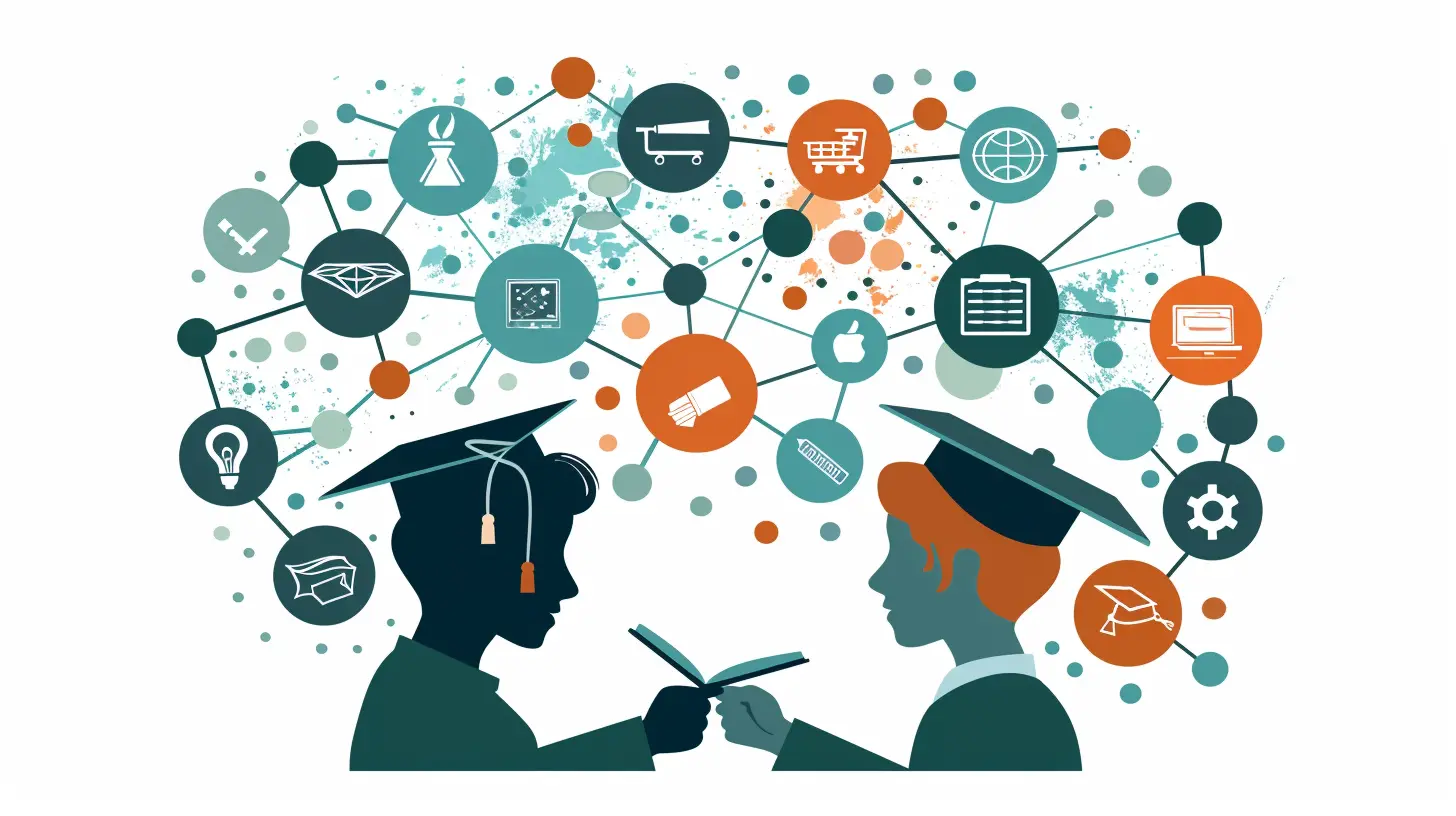The Role of Technology in Enhancing Peer Tutoring Programs
8 November 2025
Peer tutoring has come a long way from the days of scribbled notes and library meet-ups. It's no longer just the overachiever helping their classmates ace a test. Today, technology is flipping the script—supercharging how students support each other academically, socially, and personally. So what does that actually look like in the real world?
Let’s break it down and talk about how tech is not just a helpful extra—but the new backbone of modern peer tutoring programs.
What Is Peer Tutoring, Anyway?
Before we go knee-deep into the tech stuff, let’s get on the same page about what peer tutoring means. Simply put, it’s when students help other students learn. That might be a high school senior guiding a freshman through algebra, or a college sophomore walking their peer through essay writing.It’s informal, it’s friendly, and—best of all—it works. Studies have shown that peer tutoring can increase academic achievement, boost self-confidence, and even improve interpersonal skills for both the tutor and the one being tutored.
But let’s be real: coordinating sessions, tracking progress, and making sure tutors are actually helping can be tricky. That’s where technology swoops in like a superhero with a gadget belt full of solutions.
Why Traditional Peer Tutoring Needed a Makeover
Picture this: You’re trying to get algebra help after classes. You don’t know who to ask, the only available tutor is booked solid, and your notes are a mess. You waste more time coordinating than actually learning. Sound familiar?Traditional peer tutoring, while effective, came bundled with a truckload of logistical nightmares:
- Scheduling conflicts
- Limited availability
- Inconsistent quality
- Lack of feedback
- No way to track progress
Now enter technology—designed to simplify, streamline, and supercharge the entire process.
1. Breaking Down Barriers with Virtual Platforms
Online platforms like Zoom, Microsoft Teams, and Google Meet have turned couches into classrooms. Students now have the freedom to connect with their peers anytime and from anywhere. No more stressing over fitting a tutoring session into a packed school day.Key Benefits:
- Flexible scheduling- No geographical restrictions
- Real-time interaction with screen shares and digital whiteboards
Even better, there are peer-driven platforms designed specifically for tutoring, such as Knack, Brainly, and Vygo. These platforms match students based on subjects, schedule compatibility, and even personality types.
It’s like Tinder, but for tutoring—and 100% parent approved.
2. Personalized Learning with AI and Machine Learning
Artificial Intelligence might sound like something out of a sci-fi flick, but it’s already here and quietly revolutionizing peer tutoring.Imagine this: A tutoring platform that tracks a student's performance, identifies weak areas, and gives the tutor a tailored action plan. That’s AI in action.
How AI Helps:
- Adaptive learning paths- Predictive analytics to identify struggling students
- Smart matching systems that pair the right tutor with the right learner
Machine learning algorithms analyze interaction patterns to continually improve recommendations. It's almost like having a virtual academic coach whispering in your ear (but way less creepy).
3. Gamification and Engagement: Making Learning Fun Again
Let’s not sugarcoat it—learning can sometimes be a drag. But what if getting tutored felt more like leveling up in a video game?Technology allows platforms to use gamification elements like:
- Badges and rewards
- Leaderboards
- Progress bars
These features motivate both the tutor and tutee to stay engaged. It turns studying from a chore into a challenge. And who doesn’t love a good challenge?
Apps like Kahoot! and Quizlet have already cracked the code on this, making it super fun to review material together.
4. Rich Resource Sharing for Better Collaboration
Remember the days of passing flashcards in the hallway? Well, those flashcards just got a digital upgrade.Cloud-based tools like Google Drive, Notion, and OneNote allow tutors and tutees to:
- Share notes in real-time
- Collaborate on assignments
- Maintain digital portfolios
This kind of collaboration ensures everyone is on the same page—literally. And no more “I forgot my notebook” excuses.
5. Built-In Assessment and Feedback Loops
One major pain point in traditional peer tutoring is that it’s hard to know how effective it really is. Are grades improving? Is the student actually getting it?Thanks to technology, platforms now offer:
- Real-time quizzes
- Post-session feedback forms
- Progress tracking dashboards
Tutors can instantly gauge comprehension and adjust their approach accordingly. Plus, students can reflect on their own growth, which builds independence and self-awareness.
It's like having a GPS for learning—you always know if you're on the right path.
6. Tutor Training and Certification Made Easy
Let’s talk about the tutors for a second. Not every smart student is a good teacher. That’s why training is crucial—and technology makes it a breeze.Online modules, micro-courses, and even virtual simulations help students become better mentors. Some platforms even offer certification badges that they can show off on LinkedIn or college apps.
So not only does this improve the quality of tutoring, but it also builds the tutor’s resume. Win-win.
7. Inclusive and Accessible Learning for All
One of the unsung heroes of tech-integrated tutoring is accessibility. Students who have disabilities, learning differences, or mental health challenges often find traditional systems hard to navigate.Tech tools solve that by offering:
- Screen readers and text-to-speech options
- Captioned video sessions
- Adjustable font sizes and color contrasts
- Break timers and mindfulness plug-ins
It’s about meeting students where they are, not forcing them to fit into a rigid mold.
8. Data-Driven Decisions for Program Improvement
If you’re running a peer tutoring program, guess what? You don’t have to play the guessing game anymore.With analytics dashboards, you can track:
- Session frequency
- Success rates per subject
- Tutor-tutee satisfaction
- Long-term academic impact
This data helps schools and programs tweak what’s working and drop what’s not. Think of it as upgrading your tutoring program with a user manual that writes itself.
Real-World Case Studies: Tech in Action
Let’s peek at a few schools and platforms that are absolutely crushing it with tech-driven peer tutoring.Case Study 1: University of Central Florida
UCF uses the Knack platform to connect students with trained peer tutors. They’ve seen a spike in student retention and satisfaction, especially in tough STEM subjects.Case Study 2: Khan Academy’s Peer Review Forums
Khan Academy has integrated discussion boards and peer review comment systems, allowing students to tutor each other asynchronously. Students learn not just by receiving help—but by teaching others too.Case Study 3: Vygo in Australian Universities
This mobile-first platform offers peer mentoring and tutoring, with built-in analytics and scheduling tools. It’s helped schools manage thousands of sessions without breaking a sweat.Potential Challenges and How to Tackle Them
Alright, let’s be fair—technology isn’t all sunshine and rainbows. Peer tutoring programs enhanced by tech do face some speed bumps:1. Digital Divide
Not all students have access to devices or stable internet. Addressing this means schools need to invest in loaner programs and Wi-Fi hotspots.2. Privacy and Security
When student data is involved, you’ve got to lock it down. Platforms need to comply with privacy laws like FERPA and GDPR.3. Tech Overload
Too many tools can overwhelm students. The key is streamlining and integrating platforms so learners aren’t hopping between five apps for one session.The Future: Where Are We Headed?
Let’s fast forward a bit. What does the future look like for peer tutoring powered by technology?- Virtual Reality tutoring sessions?
- AI tutors that co-teach with human peers?
- Blockchain verification of tutoring hours and achievements?
All of this is more “when” than “if.”
Peer tutoring won’t just be a side hustle for helpful students—it’ll be a key part of any institution’s educational strategy, boosted by the power of tech.
Final Thoughts
Technology has taken the humble idea of peer tutoring and turned it into a full-blown learning revolution. It's not just about convenience—it's about reaching more students, improving quality, and giving everyone the tools to succeed.If you've ever thought peer tutoring was “just helping with homework,” think again. With the right tech, it’s transforming into one of the most powerful, inclusive, and effective educational tools we’ve got.
So the next time you hear someone say “students teaching students,” picture interactive dashboards, AI suggestions, and video sessions—not just whispered answers in the back of the class.
all images in this post were generated using AI tools
Category:
Peer TutoringAuthor:

Zoe McKay
Discussion
rate this article
1 comments
Mindy McNeil
Thank you for this insightful article! It effectively highlights how technology can elevate peer tutoring programs by fostering collaboration and accessibility. I'm particularly appreciative of the practical examples provided, which can inspire educators to implement these tools for a more engaging learning experience. Great work!
November 16, 2025 at 4:13 AM

Zoe McKay
Thank you for your thoughtful feedback! I'm glad you found the article insightful and the examples helpful for educators. Your support is much appreciated!


